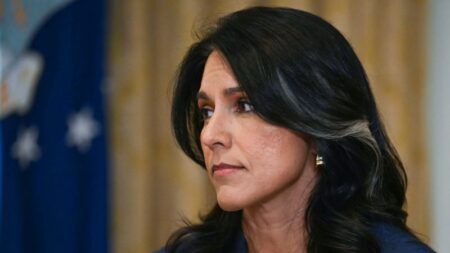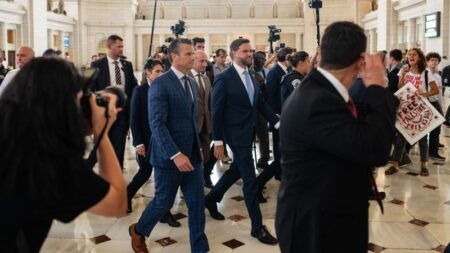In March, then-President Donald Trump signed an executive order aimed at the Smithsonian Institution, claiming that there had been a “concerted and widespread effort to rewrite our Nation’s history,” which purportedly substituted objective facts with a warped narrative influenced by ideology rather than truth. This directive raised concerns among many, suggesting that it was potentially a thinly veiled attempt to craft a historical narrative more in line with Trump’s preferences. The executive order specifically mentioned a desire to strip “improper ideology” from national artifacts, which, in context, drew skepticism regarding its true intentions.
Recent developments lent weight to those fears when references to Trump’s two impeachments were reportedly removed from a board at the National Museum of American History. The board had previously accompanied an exhibit titled “Limits of Presidential Power,” which focused primarily on historical congressional efforts to impose checks and balances on presidential authority. Critics noted that the striking off of such information felt particularly ironic, considering the project’s intent to uphold constitutional limits on presidential power, yet notably omitting Trump’s significant political controversies.
The Smithsonian indicated that the contentious board was taken down after a review of what it referred to as “legacy content,” yet the specifics surrounding the motivation for this removal remained ambiguous. Reports suggested that White House pressure to oust an art museum director may have indirectly contributed to this purging of content. Notably, museum officials have asserted that an updated version of the exhibit will encompass all impeachment efforts, including those pertaining to Trump. Nevertheless, the nature of the changes felt reminiscent of Orwellian practices, shining a light on ongoing debates about the preservation of historical integrity.
Trump’s penchant for attempting to reshape narratives to serve his interests has been documented extensively. Recently, the situation escalated when he dismissed Dr. Erika McEntarfer, commissioner of the Bureau of Labor Statistics (BLS), soon after the agency provided grim employment figures, marking the worst three-month job reporting unrelated to COVID-19 since 2010. While some of Trump’s allies defended McEntarfer’s dismissal by alleging inaccuracies in data reporting, Trump himself had revealed the nature of his decision in a candid interview, suggesting that he didn’t trust the employment figures shared and implying it was the data’s validity that prompted the dismissal.
The firing prompted considerable dissent among even some Republican senators, highlighting a noticeable concern about the precedent it set for accountability and data integrity in the administration. Senator Cynthia Lummis from Wyoming openly questioned the move while pointing out that it wasn’t the statistician’s fault if the job numbers were accurate but unfavorable to Trump’s narrative. Similarly, other lawmakers voiced fears that political motivations could overshadow the integrity of data released by governmental agencies, undermining public trust in economic indicators.
This broader trend of manipulating narratives was evidenced not only in the recent Smithsonian incident but also through various actions taken during Trump’s tenure that sought to control public discourse and historical interpretation. Examples include his efforts to portray January 6th insurrectionists as sympathetic figures and attempts to eliminate diversity initiatives across federal agencies, often targeting programs that merely honored contributions from marginalized groups.
The overall implications of these actions appear to reinforce Trump’s broader strategy to consolidate power through overt and often heavy-handed tactics. This week showcased the blunt nature of these efforts, prompting reminders that the ongoing struggle for historical truth and objective data in the public sphere is more crucial than ever. The week’s events have drawn attention to the need for vigilance in preserving unbiased accounts of history and statistical data, lest they become casualties of political whims. Ultimately, as we witness the rhythm of these trends, it’s crucial to safeguard the integrity of both historical narratives and empirical data against any forces that might wish to distort them for personal or political gain.











